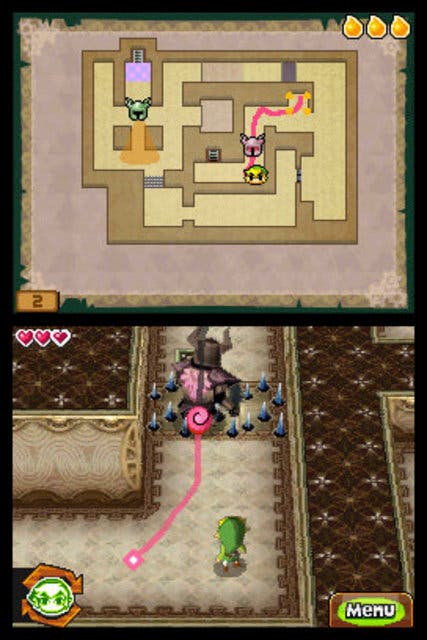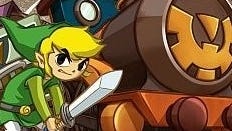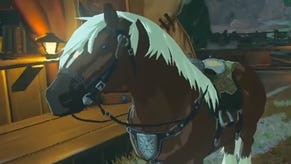The Legend of Zelda: Spirit Tracks
Full steam ahead.
It's a minority view, but of all the great Zelda games the one I've enjoyed the most is Wind Waker. I found the divisive visual style utterly captivating, bursting with charm and revealing the perpetually tongue-tied Link at his most emotive and expressive. The scene in which he retrieves the Master Sword as colour bleeds back into the world remains one of the most enchanting sequences I've experienced in a videogame.
But above all, it was the boat, the freedom of the ocean, the journey into the unknown. Structurally, it was classic Zelda, but the visual metaphor made every trip feel like a voyage of discovery, happening upon strange islands with Columbus-like relish, with the spell only broken during the laborious fetch-quests towards the end. Simply rocking gently on a moonlit sea, gazing out at the stars gave a sense of vastness and isolation I've only encountered elsewhere in Shadow of the Colossus.
So when Nintendo announced the series' DS debut would return to this cel-shaded universe, with Link's home console adventures re-adopting a grittier aesthetic, I was ecstatic. Though the exploratory elements were curtailed, Phantom Hourglass didn't disappoint; and now its direct sequel, Spirit Tracks, is due to arrive next month.
Its creator, Eiji Aonuma, the man in charge of the series since Miyamoto took one hand off the reins following Ocarina of Time, makes a compelling case for the deployment of the cartoon style on handheld.
"On handheld devices like DS, for the grand universe of Zelda to be correctly depicted, cel-shading or toon-shading style is the most appropriate," he tells Eurogamer. "If we were going to apply photorealistic proportions between human characters and objects, the player character would have to be really small."

"Thanks to that kind of graphical style we are now able to put Zelda in an adventure where people can identify the most important items without difficulty in understanding proper distance or proportion between character and object."
And, of course, it looks gorgeous. Aonuma's in London to promote Spirit Tracks. The greying hair tells you he's no longer a young man, but the infectious smile and animated enthusiasm, regardless of the language barrier, communicates a sense of childlike wonder he shares with Mr Miyamoto, which infuses the games he makes. This perhaps explains the change of direction in Spirit Tracks.
The sequel shares the fundamentals of Phantom Hourglass - and Zeldas of yore - as closely as you'd expect. The primary structural change is the mode of transport: the high seas replaced by dry land, this incarnation of Link (the game's set 100 years after Hourglass) occupying the dream role of many a child since the industrial revolution: train driver.

Broader exploration of the world, therefore, is now literally on rails, with new sections of the rail network opened up across the map as the player progresses. The steam-powered vehicle's controls are accessed via a panel on the right of the touch-screen, with forward, fast-forward, reverse and emergency stop. There's also a cute whistle to toot, by drawing the stylus over a rope in the top-right corner. Which can, I'm told, be used to scare off beasties, but also undoubtedly plays to the train driver fantasy. Toot, toot!
Out in the wild, the train operates much like the boat in Phantom Hourglass: a canon is acquired to blast enemies that appear sporadically, and routes across the network are pre-determined by scrawling appropriately on the map (though as junctions approach you are given the option to switch between tracks as you go).
Christian described the setting and opening scenes in detail back in his E3 preview. Frustratingly, during this playtest I don't see a great deal beyond this, with one crucial difference: Zelda.












